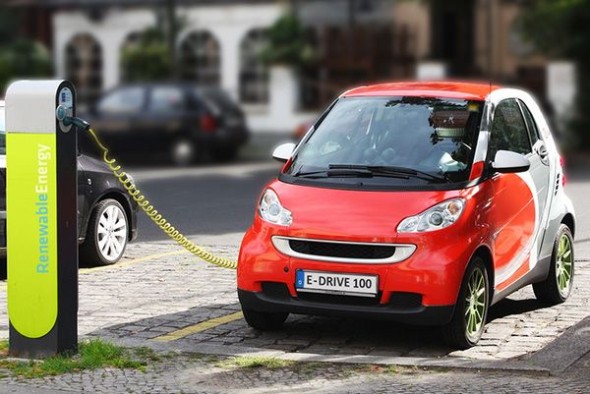PGE Unveils its Transportation Electrification Plan
Posted on October 24, 2019 by Sudeshna Pal
Tags, Energy

Portland General Electric (PGE) unveiled its first Transportation Electrification (TE) Plan earlier this month. The Plan is drafted in compliance with Oregon Public Utility Commission’s (PUC) Order No. 19-134 and is driven by several state and local greenhouse gas and climate change related policies, PGE customers’ preferences for clean fuels, and the utility’s commitment to building a decarbonized energy system.
Recent climate policies in Oregon have set standards and targets for electric vehicle adoption in the state as a step toward Oregon’s goal of reducing economy-wide emissions to 80 percent below 1990 levels by 2050. For instance, in July 2019, Governor Kate Brown signed Senate Bill 1044, which sets aggressive targets for transformation of the motor vehicle market no later than 2035. This reflects the fact that the transportation sector accounts for nearly 40 percent of greenhouse gas emissions in Oregon, and is trending upward.
PGE’s service territory is also experiencing an increase in EV registrations by customers over time. The Plan cites an external study, conducted previously by Navigant for the utility’s long-term resource plan, on distributed energy resources and their impact on PGE’s system. The study estimated a total of 926,000 EVs in PGE’s system by 2050, resulting in a forecasted EV load of 657 MWa. PGE used this study to further estimate the impact of residential passenger vehicle load on the distribution system and concluded that its system will be able to handle the new load growth in passenger EVs without requiring any capacity upgrades.
PGE’s capital investment plans to integrate EVs are based on a cost-benefit analysis. PGE calculates the present value of benefits accrued to its system from increased EV adoption and the potential for using EVs on grid services. The company calculates these “benefits to customers” amounting to $1.4 billion through 2050. It also estimates its energy and capacity costs to serve these EVs at about $971 million by the end of 2050 (in present value terms). CUB appreciates PGE’s pilot programs and expects the company to gain valuable information for future planning of its TE investments.
CUB finds that PGE’s TE plan is oriented more toward accelerating growth in EVs in its service territory, and less toward how the company will manage this new load on its system. Therefore, as explained in an earlier blog, CUB is concerned that there is too much focus on justifying expenditures based on the idea that they are accelerating transportation electrification, rather than managing the load of the EVs that are being added regardless of the utility’s actions. (Most EVs are being adopted without any actions undertaken by PGE.)
PGE’s TE Plan looks inadequate to CUB in terms of considering future uncertainty and reliability issues. Utilities are subject to a least-cost, least-risk mandate for any kind of resource planning. PGE’s TE Plan does not include any risk-analysis for its planned TE investments. Also, as an electric utility, PGE is required to provide reliable service to its customers at just and reasonable rates. The TE plan does not elaborate on how the utility plans to address issues of resource adequacy that may arise as this new EV load starts impacting its system.
Lastly, the plan indicates a need for “front-loading” investments in order to increase future system benefits and decrease future system costs that would result from EVs. The impact of this approach on ratepayers remains to be evaluated. CUB will actively participate in ensuring that PGE’s TE Plan stays in compliance with PUC requirements, accurately accounts for benefits and costs of having a growing number of EVs, and efficiently manages the new load that will be added onto its system.
EV load is growing and this means that EVs are contributing revenue to the utility system. By managing how this load is served, utilities can ensure that EVs add more revenue to the system than they do costs, therefore putting downward pressure on rates. In this manner, all utility customers will benefit as the electric system helps reduce carbon emissions from the transportation sector.
To keep up with CUB, like us on Facebook and follow us on Twitter!




10/24/19 | 0 Comments | PGE Unveils its Transportation Electrification Plan